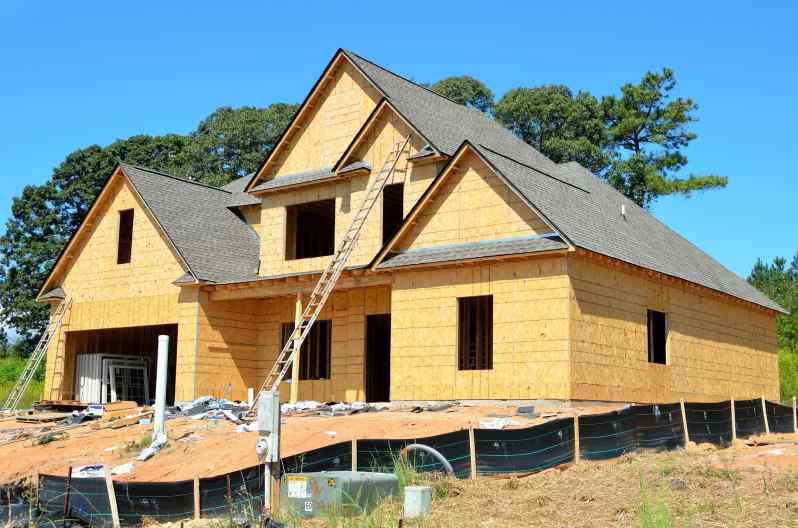Mold is a common fungus that grows in the presence of water. While you might expect mold in older homes, it’s recently become a problem with new construction as well. The increase in mold in new homes is largely due to building practices, even in so-called luxury homes. We look at the signs of mold in new construction and explain why it’s becoming an issue.
Why Mold in New Home Construction is a Big Problem
Unfortunately, mold in new home construction is increasingly common. In most cases, builders are in a rush to build homes over the fall and winter so they are ready for the market come spring. While there are ways to do so safely, the risk of mold growing in new homes increases substantially when building this way.
The main cause of mold in new home construction is related to the foundation. In many cases, the basement studs and vapor barriers are installed while the foundation is still wet. This traps water inside the walls and can lead to mold over time.
In other cases, the foundation is poured in the fall and then capped with the floor joists and temporary flooring. While the temporary flooring is removed, the floor joists have been exposed to the weather all winter. Then the rest of the home is built on them while they are still wet.
Although it’s good for your utility bills, the energy efficiency of new homes is another reason for mold. New homes are often sealed tight, which keeps out both cold and heat. The downside is that this also traps moisture from hot showers, cooking, and laundry. And once you have moisture, it’s just a matter of time before mold appears.
What Are the Signs of Mold in a New Home?
Seeing mold is the most obvious sign you have mold in a new house. However, you won’t always see it even though you have a mold problem. Here are some signs of mold in new construction:
- Peeling or cracking paint
- Stains or discoloration on walls or ceilings
- Soft or spongy walls
- Musty smells
Some people report health issues or more severe than usual allergies or asthma symptoms. These may include congestion, trouble breathing, frequent headaches, or respiratory issues. However, these are not always a clear indicator of mold in new homes.
What To Do If You Have Mold in a New Home
If you have mold in a new home, you need to deal with the moisture problem to get rid of it. Cleaning mold with bleach is only a temporary solution at best. As long as the moisture remains, the mold will return eventually.
Contact a mold removal company for an assessment to determine the cause and extent of the mold. Once you have the results, file a claim with your insurance company. In most cases, they will cover the cost of mold removal and repairs.
If you have a home warranty from the builder, you might even be able to file a claim directly with them. If you need to take legal action, hire a reputable lawyer familiar with new home construction and mold litigation.
How to Prevent Mold in Your New Home
The best way to prevent mold in new construction is with good airflow and ventilation.
- Open windows every few days to allow moisture to escape
- Use the exhaust fan any time you are cooking or showering
- Also, leave exhaust fans running for at least 30 minutes afterward
- Check basements and crawl spaces every few weeks for moisture or mold
- Run a dehumidifier if your basement or crawl space smells musty or damp
- Call a mold removal company for an inspection if you are concerned about mold
Think you have mold? Call 1-888-443-3110 now for a risk-free quote on mold removal.





